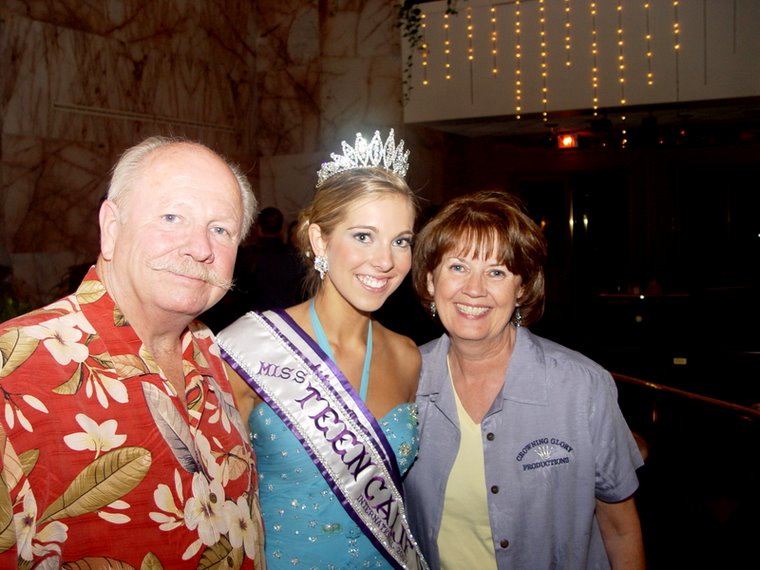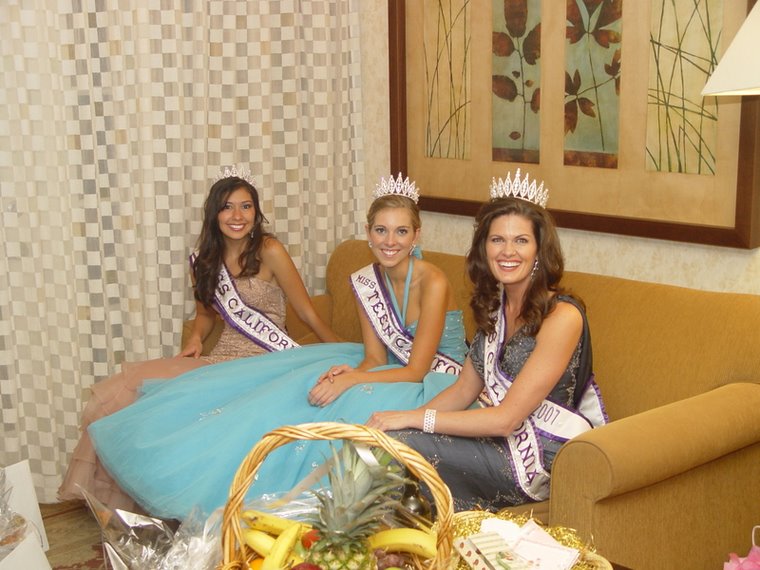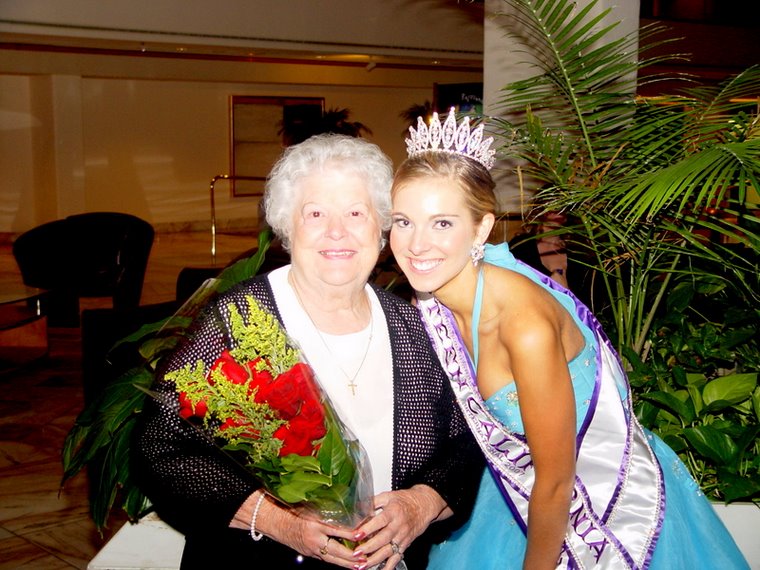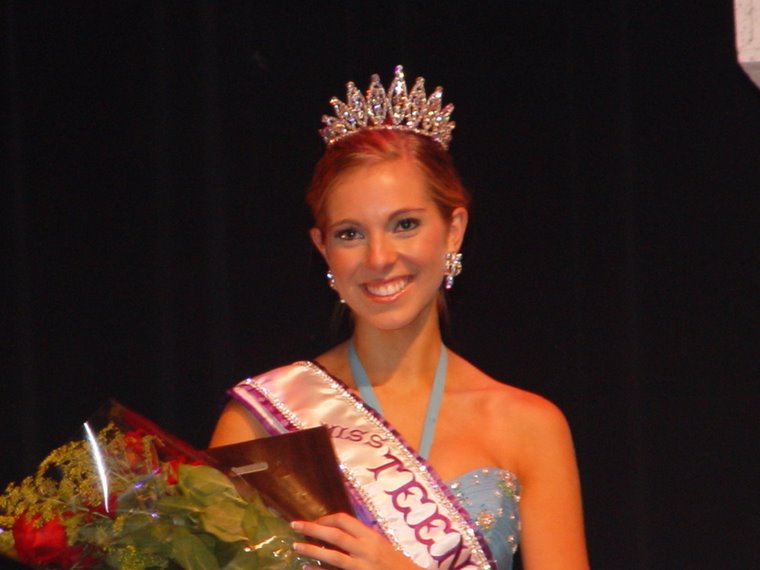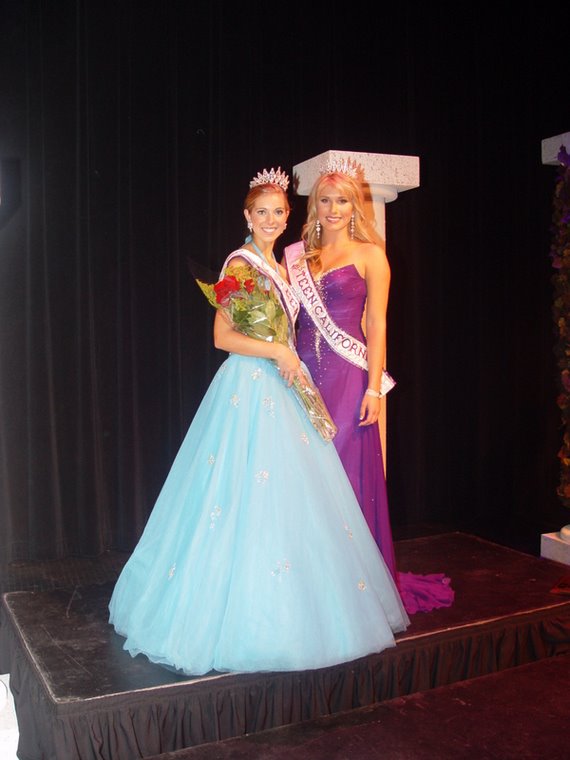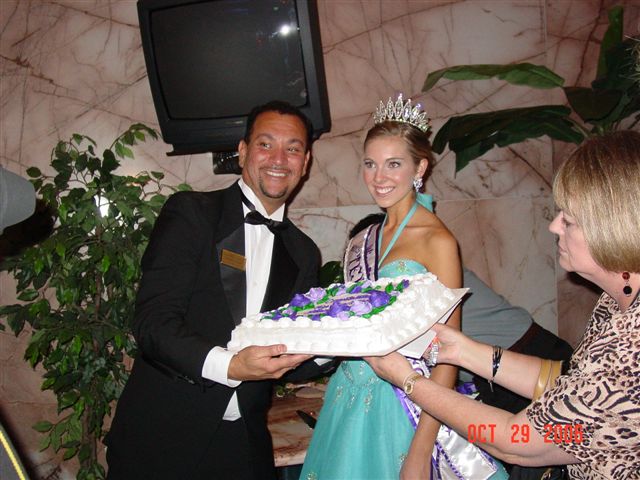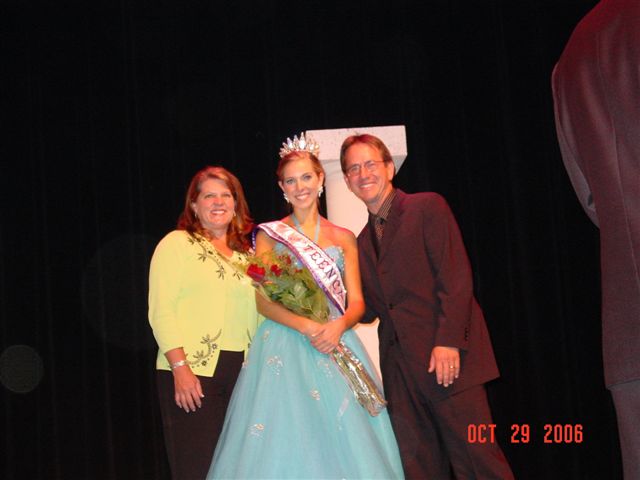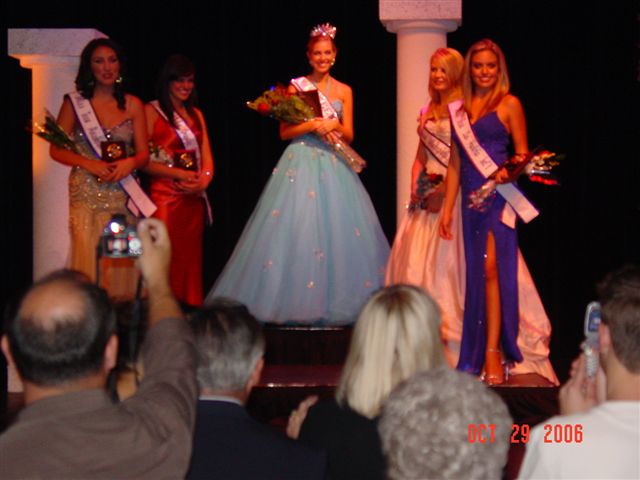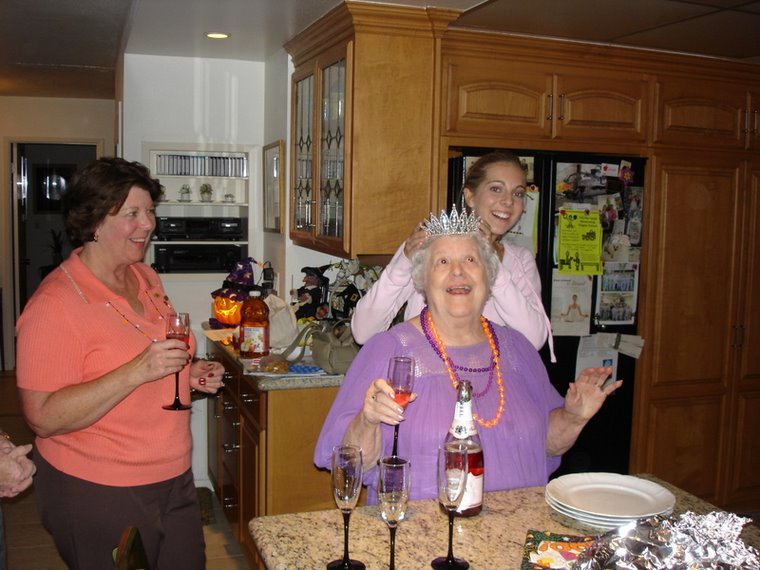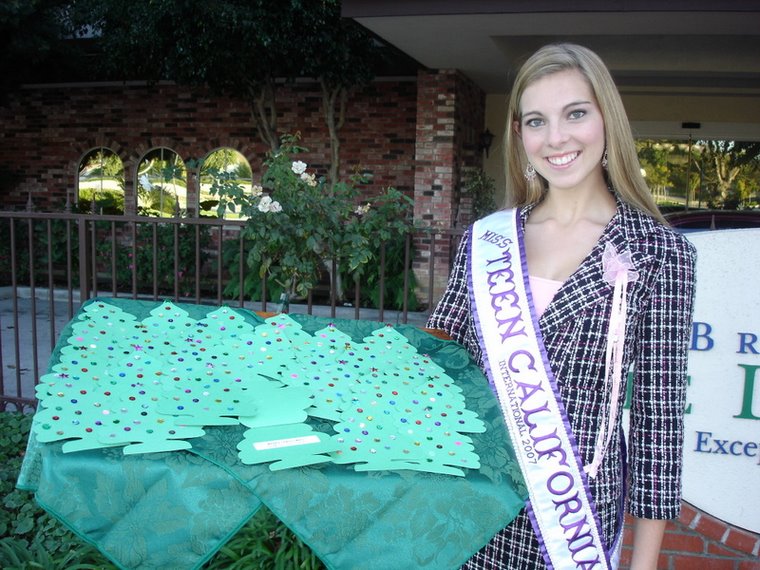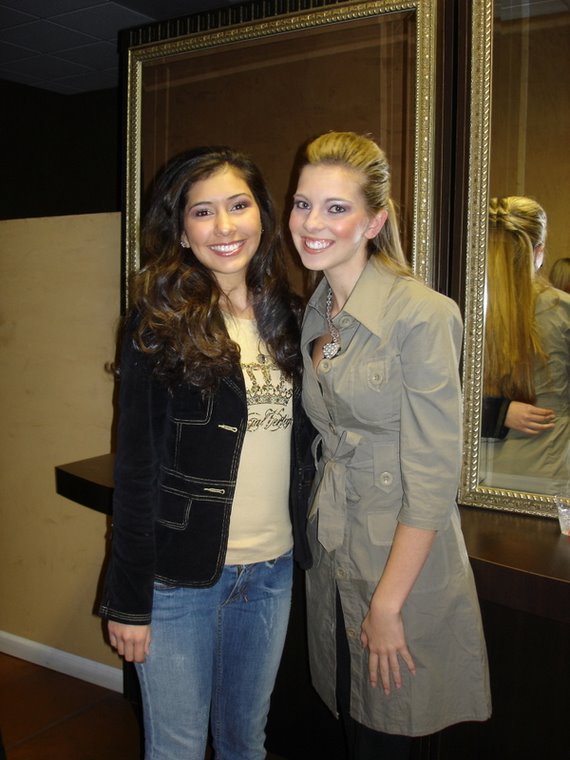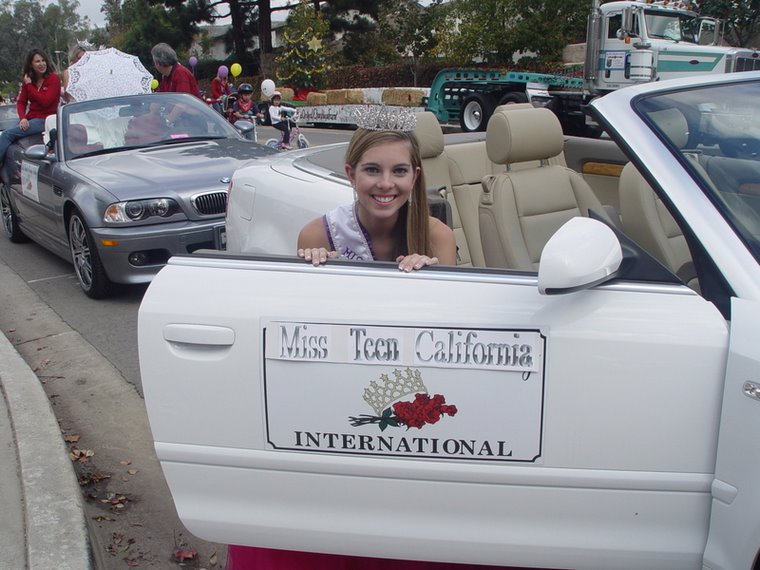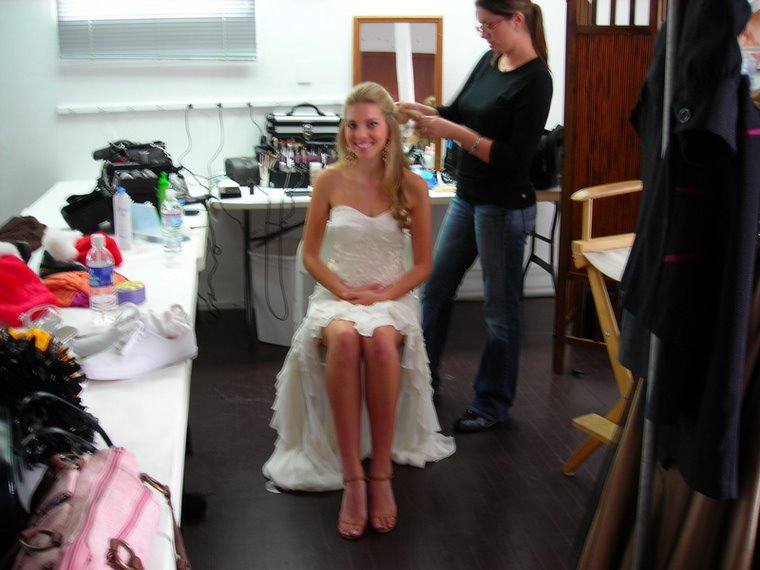| Slideshow design generated with Smilebox |
Tuesday, July 6, 2010
4th of July!
We had a wonderful 4th of July despite this gloomy weather that we've been having lately. It has become somewhat of a tradition to celebrate this holiday with our family friends, the Magglos family. They have a beautiful home in Malibu and it is so nice of them to host this annual event. The food was absolutely delicious- Jim barbequed ribs and my favorite was the Cuban corn with mojita cheese! It was so nice to catch up with everyone and talk about what we've been up to for the past year. It definitely felt like summer as we sat in the sun on the swinging couches! Too bad it was too gloomy to see very many fireworks! Happy 4th of July everyone! I feel so blessed to be born in and live in America- I'm so proud to be an American!
Tuesday, June 29, 2010
The Grove with Lizzy!



This past weekend Lizzy and I had so much fun hanging out in LA- especially at the Grove! Lizzy had never been to Dupar's before and I made sure to take her there to try their world famous buttermilk pancakes! Absolutely delicious- especially with the boysenberry syrup! We had so much fun looking around the Farmer's Market and trying freshly churned peanut and almond butter- so good! We also had a blast shopping- especially at Victoria's Secret! I absolutely love the Grove- especially during the summer time. They had a live salsa band and dancing- next time we're bringing our dance partners!
Lexie's 3rd Birthday!
This weekend we celebrated Lexie's 3rd birthday- how time flies! It seems like she was born just yesterday! It's so exciting to watch her grow up and watch her little personality blossom- she has so much joy for life! The theme was absolutely adorable- Tori did such an excellent job planning it. The theme was based on bugs- especially ladybugs! Tori had a bug zoo and even a butterfly garden with real butterflies that she raised. As a party favor she gave each of the children their own bag of real ladybugs- what an original idea! It was so nice to spend time with the family and enjoy the innocence of childhood. Happy birthday Lexie!
| Free slideshow design made with Smilebox |
Friday, June 18, 2010
Lauren's Graduation!
Yesterday we celebrated Lauren's high school graduation! I can't believe that she is officially done with high school- I am so proud of her and she deserves every future success. We attended Foothill Technology High School's graduation at Ventura College-it was a lovely commencement ceremony and it was so exciting to watch Lauren receive her diploma and turn that tassel! I graduated last year so it was fun seeing graduation from another perspective. Foothill is such an amazing school- they truly prepared me for college and gave me some of the best memories and experiences. I think Lauren feels the same way; she is so artistic and creative and Foothill was the perfect place to foster that passion. After her graduation we celebrated at Chicago Ribs for a delicious luncheon.
Today Lauren had her official graduation party which was so lovely. It's amazing how well the Beltrans have kept in touch with so many people throughout the years; I love that Lauren's friends are the ones that she had as a child- including me! It was so fun to look back on all the old pictures and memories. We all had a great time reflecting back on the years- so much to be thankful for.
Lauren and I will be friends forever. She is my best friend till death do us part! I am so proud of her and I can't wait to see what the future holds for her!
Today Lauren had her official graduation party which was so lovely. It's amazing how well the Beltrans have kept in touch with so many people throughout the years; I love that Lauren's friends are the ones that she had as a child- including me! It was so fun to look back on all the old pictures and memories. We all had a great time reflecting back on the years- so much to be thankful for.
Lauren and I will be friends forever. She is my best friend till death do us part! I am so proud of her and I can't wait to see what the future holds for her!
| Make your own free digital slideshow |
Sunday, June 13, 2010
My Views on the Miss USA Pageant
On May 16, 2010, Donald Trump “hired” his newest employee, Rima Fakih, as Miss USA 2010 on a live television broadcast. The former Miss Michigan, along with 50 other contestants, exemplified Naomi Wolf’s definition of the beauty myth as they graced the stage in their string bikinis. The pageant literally “assigns value to women in a vertical hierarchy according to a culturally imposed physical standard” while simultaneously encouraging women to compete against each other (Wolf 12, 14). As a former pageant contestant, I will draw on my personal experience along with Wolf’s The Beauty Myth, Etcoff’s Survival of the Prettiest, and other authors who have studied the implications of the “beauty myth” in American culture from both a sociological and evolutionary perspective. I will delve into the upfront versus subliminal messages that the Miss USA pageant sends to its viewers and especially to its contestants. I will discuss how these messages affect women in the form of cosmetics, fashion, eating disorders, and plastic surgery. I will also study how this shapes the male perspective and how both sexes have become dependent on the beauty myth because of the false promises of the “halo effect” (Etcoff 49). Lastly, I will discuss how women, especially beauty queens, can and need to combat the beauty myth by empowering themselves, by appreciating rather than envying other women’s beauty, and by uniting together for the liberation of women.
It is important to note that there are a multitude of pageants, each with a different emphasis. I have competed in both the Miss America and Miss International systems which focus on talent and community service, respectively. But with the Miss USA pageant, a ballet routine or a philanthropic platform is unnecessary; it is all about that beloved bikini. The 15 second body shot is worth thousands of dollars- from custom designer gowns, pageant coaches, fitness trainers, and cosmetic implants; it takes more than a naturally pretty face or healthy body to win the title. This year’s pageant was glamorous, sexy, and noticeably synchronized as each girl did the classic hair flip and sultry yet sweet smile into the camera. The show included competitions in swimsuit, evening gown, and onstage question; and of course it would not be a pageant without that crowing moment of tears, hands over the mouth, and starry eyes looking up to thank God- believe me, I have seen this routine more than once.
As a former competitor, I can tell you that this pageant means everything to these girls; they invest hours dieting, exercising, and shopping for up to a year in advance vying for the title. These are impressive young women; they all attend universities, participate in philanthropic service, and have opinions on current political events. But unfortunately the cameras do not emphasize that. NBC and the Trump Organization make a mockery of the talents, passions, and identities of these women by zooming in on their immaculate breasts and tiny waists rather than their resumes. Sadly, while these women whole heartedly dedicate much of their lives toward winning the crown, much of the world watches this live taping as either humorous entertainment or soft porn.
By idolizing the bodies and faces of these women rather than their personal identities, the Miss USA pageant ingrains the “beauty myth” into not only the contestants, but to its female viewers. Women begin to think that the only way they can be loved, happy, or successful is by being seen and judged by others as beautiful. What these women do not realize is that “what is really at stake is not fashion or beauty or sex, but a struggle over political hegemony” (Wolf 188). While these beauty queens appear to be empowered by tossing their head back and laughing or swinging the hips along the runway, their petty preoccupations silently undermine the political, economic, and social progress that women have made during previous feminist movements. Trapped by the “Iron Maiden”, a term that Wolf uses, which teaches women that they must fit into a “rigid, cruel, and euphemistic” mold, even these pageant contestants can never be the perfect woman as is evidenced by their scores shown in the upper right hand corner of the television screen (17). Not one constant scored higher than a 9.1- even Miss USA herself is not a perfect ten. If this is the case, what is this telling women across America regarding their own bodies? Because the beauty myth thrives on competition amongst women and seeks approval from a patriarchal society, females will continue to be a celery eating, treadmill running, and lipstick wearing population in order to match up with their female peers.
While the beauty myth is sociologically driven; there is a biological and evolutionary explanation for our desire to be beautiful. According to Nancy Etcoff’s Survival of the Prettiest, we have an “extreme sensitivity to beauty that is hard wired…by circuits in the brain shaped by natural selection” (24). It has been evidenced that people can identify and agree on physical attractiveness quickly and consistently so it is plausible that most humans would find “fair, blushing skin” and hair full of “color, shine, texture, and movement” as attractive because it is genetically coded in the human brain (Bell and McLaughlin 456), (Etcoff 104, 120). In the pageant, every contestant had full, lustrous hair, though surprisingly only about ten were blonde, which from an evolutionary perspective is favored because it suggests youth (126). There was even less diversity with skin color; while there were only five African American contestants, only Miss District of Columbia was actually dark skinned. While it may be evolutionarily encoded to prefer “light skin because it is a more transparent window to health, age, and sexual interest than darker skin”, this has taught many women of color that unless you are fair skinned, you are not beautiful (Etcoff 105). Because the beauty myth thrives on the division of women, unchangeable skin color has continued to establish “privilege and higher social status” for Caucasians. In the case of Miss USA it is usually the difference between “the crown” and “the frown”- or the winners and the losers (Berry 66).
Even the evolutionarily prized clear, pale skin is not enough to win a pageant though. Most contestants pay thousands of dollars for make-up artists and this year’s broadcast showed contestants hurriedly applying make-up under glamorized Hollywood mirrors backstage. Make-up is an essential factor of the beauty myth; it is “part of the social organization of gender, race, class, femininity, sexuality, and the social construction of self” (Beausoleil 33-34). Most women have been subconsciously taught to enjoy wearing make-up because they have been told to associate it with being “healthy, energetic, well rested, and heterosexual,” (Bell and McLaughlin 458). Due to the subtly of the beauty myth, make-up has become an essential part of a woman’s identity, whether she wears it or not. For many women a tube of lipstick or mascara establishes their level of confidence, self respect, and happiness for the day. Without it they are worthless. With it, they are priceless. What many women do not realize is that this dependence on cosmetics strengthens the power of the beauty myth because it makes women powerless.
A pretty face is worthless without the dress. Usually priced at around $2,500, these custom-designed, Swarovsky crystal encrusted, and tightly fitted evening gowns are a trademark of any pageant. This was my favorite part of the Miss USA pageant because they had voice-overs of each contestant as she modeled her gown. Girls said the following: “I feel like a goddess”, “I’m the epitome of poise, glamour, and elegance” and “I feel the most beautiful I’ve ever felt”. I found these comments uplifting and it was so refreshing to hear women celebrate their beauty rather than be ashamed of it. Unfortunately this moment was quickly tainted by Joan Rivers: “You can’t buy poise; like herpes, you either have it or you don’t”. Nonetheless, all of the gowns represented the personality of each contestant, and each girl unconsciously used style to “look younger, taller, and richer” and to display “sex and status” (Etcoff 209). From both a sociological and evolutionary stand, clothes “add to sex appeal” whether it is for mating purposes or for the standards of the beauty myth which encourages fashion as a way to establish status and self-worth. Whether we use fashion as a form of self expression or to submit to supposed trends, “great clothes make a drop dead entrance”- especially when the newly crowned Miss USA actually tripped in her gown (208).
Rima Fakih is an exception to the stereotype of a typical pageant queen. Born in Lebanon, she began a mentoring program and currently attends the University of Michigan, majoring in economics. This Miss USA is definitely no “pageant patty”- she won the pageant on her first try, even though she had to sell her car to pay for the many expenses of competing. Rima serves as an excellent role model for young women because her success proves that you don’t have to be white, blonde, or wealthy to win a pageant or make a difference in the world for that matter. Her final comment was unnerving though. When asked, “How do you feel? she said, “Ask me after I’ve eaten a pizza!”
While it has not been proven that any of the contestants have an eating disorder, it can be estimated that many of them do, especially since the current statistic is that “5 to 10 percent of all American girls and women are anorexic” (Wolf 182). Inevitably these contestants feel an intense amount of pressure to be thin; five million people and a celebrity panel of judges are looking at their every curve, jiggle, and fold. Eating disorders are a private battle though; the cameras do not show contestants throwing up, starving, or going to the gym for hours. By engaging in the obsession to be thin, some contestants are undermining themselves and in the process they are teaching, encouraging, and forcing other women and girls who watch to do the same. As Wolf writes, “Where feminism taught women to put a higher value on ourselves, hunger teaches us how to erode our self-esteem,” (197). Many women of all ages are willingly becoming prisoners to the beauty myth, hoping to find a false sense of security and control. Instead, all these women find is emptiness, insecurity, and an insatiable craving for pizza among other things.
While pageant contestants strive for a small figure, one thing that is not small is their bust size. Priced at around $3,000, many pageant contestants get breast enhancement surgery because “they look official, photograph well, and will never change- the beauty myth’s ultimate goal,” (Berry 72), (Wolf 248). As these women strive to achieve this “cookie cutter standardized form of ‘beauty’”, women are not only losing their unique physical traits, they are losing their naturalness that makes them human (Berry 82). Furthermore, what is this telling young girls in their training bras or older women in their extra support underwires? There is a “widening gap” between the beautiful and the average, possibly making plain Jane “the subject of even greater bias”, insecurity, and intimidation because of the beauty myth (Berry 82). These subhuman models are creating an unattainable standard of beauty that only money, silicone, and a knife can achieve. The beauty of a real woman is no longer celebrated by the Miss USA pageant.
Some men watching the pageant are learning to not appreciate a woman’s natural beauty, either. Men are equally affected by the beauty myth, but in different ways; they are often taught to be fetishists, becoming more “aroused by symbols of sexuality than by the sexuality of women themselves,” (Wolf 175). Though the Miss USA pageant is not pornographic, the startling “glam shots” of each contestant in fish nets, lacy bras (or no bras), and tousled hair was extremely controversial this year in particular. Rather than apologize for the pictures, the Trump Organization chose to showcase each girl’s picture during the live broadcast. This overemphasized sexuality is only hurting male viewers, though the drool coming out of their mouths may seem otherwise. The beauty myth is ruining the humanness of men by “preventing them from actually seeing women…It does not stimulate and gratify sexual longing,” rather, it was “a numbing effect, reducing all senses but the visual, and impairing even that,” (Wolf 174). Many relationships are suffering between men and women because the beauty myth has taught both sexes that “beauty is the most universal symbol of success,” and without it, a person is worthless (Martin 155).
Therefore, it is natural that women want to become this symbol and men want to find a woman to embody this symbol because of the social exchange theory stating that social power can be obtained by being “romantically associated with attractive people” (Martin 155), (Berry 32). Because of the “halo effect”, good-looking people are perceived to be “smarter, more sociable and popular, have higher self-esteem, and are more desirable,” (Bell and McLaughlin 456). Yet this assumption of a happier life is not necessarily true. Happiness is based more on “optimism, a sense of personal control, self-esteem, and ability to tolerate frustration,”- all of which the beauty myth tirelessly works to undermine (Etcoff 85). These pageant contestants are no exception to the beauty myth or to the “attribution theory” which correlates beauty with prosperity and success; the only difference is that instead of seeking a halo, these women seek a crown (Martin 55), (Berry 32).
We need to take a stand against the beauty myth, not the Miss USA pageant. These pageant contestants are not at fault for competing in the pageant; they, like the rest of the female population, want to feel beautiful, loved, and successful. Unfortunately, the beauty myth has taught them that the only way to be worthy of receiving such adoration is by being judged as a “10”. Until women realize that “10’s” do not exist and that they are instead victims of a political battle in which appearance, dieting, surgery, or cosmetics are merely symptoms of the beauty myth, many women will continue to suffer.
The beauty myth does not have to be permanent or inevitable. Pageant contestants have a prime opportunity to liberate women from its bindings, and it is not by refusing to wear make-up or by gaining twenty pounds. Because of the competitive nature of the pageant system, women can instead take this as an opportunity to see their fellow contestants’ beauty not “as a threat or an insult, but a pleasure and a tribute,” (Wolf 287). It is time that all women embrace their bodies and the natural beauty that comes with it. If women can take a united stand, beauty can be “reinterpreted as noncompetitive, nonhierarchical, and nonviolent” once and for all (Wolf 286). Who cares if Donald Trump says, “You’re fired!”…he would soon be out of money anyway because no girl would compete in his pageant anymore.
Miss USA has become an icon; young girls want to be her, men want to date her, and fellow women mock, envy, or admire her. She is the emblem of the beauty myth; her victory means the failure of many others and her body and face are symbolic of ideal beauty- even though scores show that she is not even a perfect “10”. Every woman, whether modeling a bikini on TV or watching the pageant at home, is affected by both the subtle and blatant messages of the pageant. These messages say that a woman cannot be loved, special, or happy unless she is deemed beautiful. In order to attain this unattainable goal, women are painting themselves, designing themselves, starving themselves, and surgically altering themselves but it is still never good enough. It is not just Caucasian women that are subjected to the beauty myth; from the six year old girl with wide eyes, to the 28 year old man with his jaw hanging open, the Miss USA broadcast affects both men and women, all races and ethnicities, and all social classes- no one is exempt from the lure of the crown. Yet it is my sincere hope that one day women of every size, shape, and color will feel loved, appreciated, and special not by a cold society that ranks them with a calculated score but instead by their lovers, children, and friends who find them irreplaceably beautiful as they naturally are.
Works Cited
Beausoleil, Natalie. "Makeup in Everyday Life: An Inquiry into the Practices of Urban American Women of Diverse Backgrounds." 33-34. Print.
Bell, Myrtle P., and Mary E. McLaughlin. "Outcomes of Appearance and Obesity in Organizations." 456, 458. Print.
Berry, Bonnie. "Cosmetics, Cosmeceuticals, and Other Superficial Changes." Beauty Bias: Discrimination and Social Power. Westport, Conn.: Praeger, 2007. 66. Print.
Berry, Bonnie. "Looks and Romance." Beauty Bias: Discrimination and Social Power. Westport, Conn.: Praeger, 2007. 32. Print.
Berry, Bonnie. "The Plastic Surgery Industry." Beauty Bias: Discrimination and Social Power. Westport, Conn.: Praeger, 2007. 72, 82. Print.
Etcoff, Nancy L. Survival of the Prettiest: the Science of Beauty. New York: Doubleday, 1999. 24, 85, 104-105, 120, 208-209. Print.
Martin, Courtney E. "What Men Want: The Truth About Attraction, Porn, and the Pursuit." Perfect Girls, Starving Daughters: the Frightening New Normalcy of Hating Your Body. New York: Free, 2007. 155. Print.
Miss USA 2010 Pageant. NBC. Las Vegas, Nevada, 16 May 2010. Television.
Wolf, Naomi. The Beauty Myth: How Images of Beauty Are Used against Women. New York: W. Morrow, 1991. 12, 14, 17, 174-175, 182, 188, 197, 248, 286-287. Print.
It is important to note that there are a multitude of pageants, each with a different emphasis. I have competed in both the Miss America and Miss International systems which focus on talent and community service, respectively. But with the Miss USA pageant, a ballet routine or a philanthropic platform is unnecessary; it is all about that beloved bikini. The 15 second body shot is worth thousands of dollars- from custom designer gowns, pageant coaches, fitness trainers, and cosmetic implants; it takes more than a naturally pretty face or healthy body to win the title. This year’s pageant was glamorous, sexy, and noticeably synchronized as each girl did the classic hair flip and sultry yet sweet smile into the camera. The show included competitions in swimsuit, evening gown, and onstage question; and of course it would not be a pageant without that crowing moment of tears, hands over the mouth, and starry eyes looking up to thank God- believe me, I have seen this routine more than once.
As a former competitor, I can tell you that this pageant means everything to these girls; they invest hours dieting, exercising, and shopping for up to a year in advance vying for the title. These are impressive young women; they all attend universities, participate in philanthropic service, and have opinions on current political events. But unfortunately the cameras do not emphasize that. NBC and the Trump Organization make a mockery of the talents, passions, and identities of these women by zooming in on their immaculate breasts and tiny waists rather than their resumes. Sadly, while these women whole heartedly dedicate much of their lives toward winning the crown, much of the world watches this live taping as either humorous entertainment or soft porn.
By idolizing the bodies and faces of these women rather than their personal identities, the Miss USA pageant ingrains the “beauty myth” into not only the contestants, but to its female viewers. Women begin to think that the only way they can be loved, happy, or successful is by being seen and judged by others as beautiful. What these women do not realize is that “what is really at stake is not fashion or beauty or sex, but a struggle over political hegemony” (Wolf 188). While these beauty queens appear to be empowered by tossing their head back and laughing or swinging the hips along the runway, their petty preoccupations silently undermine the political, economic, and social progress that women have made during previous feminist movements. Trapped by the “Iron Maiden”, a term that Wolf uses, which teaches women that they must fit into a “rigid, cruel, and euphemistic” mold, even these pageant contestants can never be the perfect woman as is evidenced by their scores shown in the upper right hand corner of the television screen (17). Not one constant scored higher than a 9.1- even Miss USA herself is not a perfect ten. If this is the case, what is this telling women across America regarding their own bodies? Because the beauty myth thrives on competition amongst women and seeks approval from a patriarchal society, females will continue to be a celery eating, treadmill running, and lipstick wearing population in order to match up with their female peers.
While the beauty myth is sociologically driven; there is a biological and evolutionary explanation for our desire to be beautiful. According to Nancy Etcoff’s Survival of the Prettiest, we have an “extreme sensitivity to beauty that is hard wired…by circuits in the brain shaped by natural selection” (24). It has been evidenced that people can identify and agree on physical attractiveness quickly and consistently so it is plausible that most humans would find “fair, blushing skin” and hair full of “color, shine, texture, and movement” as attractive because it is genetically coded in the human brain (Bell and McLaughlin 456), (Etcoff 104, 120). In the pageant, every contestant had full, lustrous hair, though surprisingly only about ten were blonde, which from an evolutionary perspective is favored because it suggests youth (126). There was even less diversity with skin color; while there were only five African American contestants, only Miss District of Columbia was actually dark skinned. While it may be evolutionarily encoded to prefer “light skin because it is a more transparent window to health, age, and sexual interest than darker skin”, this has taught many women of color that unless you are fair skinned, you are not beautiful (Etcoff 105). Because the beauty myth thrives on the division of women, unchangeable skin color has continued to establish “privilege and higher social status” for Caucasians. In the case of Miss USA it is usually the difference between “the crown” and “the frown”- or the winners and the losers (Berry 66).
Even the evolutionarily prized clear, pale skin is not enough to win a pageant though. Most contestants pay thousands of dollars for make-up artists and this year’s broadcast showed contestants hurriedly applying make-up under glamorized Hollywood mirrors backstage. Make-up is an essential factor of the beauty myth; it is “part of the social organization of gender, race, class, femininity, sexuality, and the social construction of self” (Beausoleil 33-34). Most women have been subconsciously taught to enjoy wearing make-up because they have been told to associate it with being “healthy, energetic, well rested, and heterosexual,” (Bell and McLaughlin 458). Due to the subtly of the beauty myth, make-up has become an essential part of a woman’s identity, whether she wears it or not. For many women a tube of lipstick or mascara establishes their level of confidence, self respect, and happiness for the day. Without it they are worthless. With it, they are priceless. What many women do not realize is that this dependence on cosmetics strengthens the power of the beauty myth because it makes women powerless.
A pretty face is worthless without the dress. Usually priced at around $2,500, these custom-designed, Swarovsky crystal encrusted, and tightly fitted evening gowns are a trademark of any pageant. This was my favorite part of the Miss USA pageant because they had voice-overs of each contestant as she modeled her gown. Girls said the following: “I feel like a goddess”, “I’m the epitome of poise, glamour, and elegance” and “I feel the most beautiful I’ve ever felt”. I found these comments uplifting and it was so refreshing to hear women celebrate their beauty rather than be ashamed of it. Unfortunately this moment was quickly tainted by Joan Rivers: “You can’t buy poise; like herpes, you either have it or you don’t”. Nonetheless, all of the gowns represented the personality of each contestant, and each girl unconsciously used style to “look younger, taller, and richer” and to display “sex and status” (Etcoff 209). From both a sociological and evolutionary stand, clothes “add to sex appeal” whether it is for mating purposes or for the standards of the beauty myth which encourages fashion as a way to establish status and self-worth. Whether we use fashion as a form of self expression or to submit to supposed trends, “great clothes make a drop dead entrance”- especially when the newly crowned Miss USA actually tripped in her gown (208).
Rima Fakih is an exception to the stereotype of a typical pageant queen. Born in Lebanon, she began a mentoring program and currently attends the University of Michigan, majoring in economics. This Miss USA is definitely no “pageant patty”- she won the pageant on her first try, even though she had to sell her car to pay for the many expenses of competing. Rima serves as an excellent role model for young women because her success proves that you don’t have to be white, blonde, or wealthy to win a pageant or make a difference in the world for that matter. Her final comment was unnerving though. When asked, “How do you feel? she said, “Ask me after I’ve eaten a pizza!”
While it has not been proven that any of the contestants have an eating disorder, it can be estimated that many of them do, especially since the current statistic is that “5 to 10 percent of all American girls and women are anorexic” (Wolf 182). Inevitably these contestants feel an intense amount of pressure to be thin; five million people and a celebrity panel of judges are looking at their every curve, jiggle, and fold. Eating disorders are a private battle though; the cameras do not show contestants throwing up, starving, or going to the gym for hours. By engaging in the obsession to be thin, some contestants are undermining themselves and in the process they are teaching, encouraging, and forcing other women and girls who watch to do the same. As Wolf writes, “Where feminism taught women to put a higher value on ourselves, hunger teaches us how to erode our self-esteem,” (197). Many women of all ages are willingly becoming prisoners to the beauty myth, hoping to find a false sense of security and control. Instead, all these women find is emptiness, insecurity, and an insatiable craving for pizza among other things.
While pageant contestants strive for a small figure, one thing that is not small is their bust size. Priced at around $3,000, many pageant contestants get breast enhancement surgery because “they look official, photograph well, and will never change- the beauty myth’s ultimate goal,” (Berry 72), (Wolf 248). As these women strive to achieve this “cookie cutter standardized form of ‘beauty’”, women are not only losing their unique physical traits, they are losing their naturalness that makes them human (Berry 82). Furthermore, what is this telling young girls in their training bras or older women in their extra support underwires? There is a “widening gap” between the beautiful and the average, possibly making plain Jane “the subject of even greater bias”, insecurity, and intimidation because of the beauty myth (Berry 82). These subhuman models are creating an unattainable standard of beauty that only money, silicone, and a knife can achieve. The beauty of a real woman is no longer celebrated by the Miss USA pageant.
Some men watching the pageant are learning to not appreciate a woman’s natural beauty, either. Men are equally affected by the beauty myth, but in different ways; they are often taught to be fetishists, becoming more “aroused by symbols of sexuality than by the sexuality of women themselves,” (Wolf 175). Though the Miss USA pageant is not pornographic, the startling “glam shots” of each contestant in fish nets, lacy bras (or no bras), and tousled hair was extremely controversial this year in particular. Rather than apologize for the pictures, the Trump Organization chose to showcase each girl’s picture during the live broadcast. This overemphasized sexuality is only hurting male viewers, though the drool coming out of their mouths may seem otherwise. The beauty myth is ruining the humanness of men by “preventing them from actually seeing women…It does not stimulate and gratify sexual longing,” rather, it was “a numbing effect, reducing all senses but the visual, and impairing even that,” (Wolf 174). Many relationships are suffering between men and women because the beauty myth has taught both sexes that “beauty is the most universal symbol of success,” and without it, a person is worthless (Martin 155).
Therefore, it is natural that women want to become this symbol and men want to find a woman to embody this symbol because of the social exchange theory stating that social power can be obtained by being “romantically associated with attractive people” (Martin 155), (Berry 32). Because of the “halo effect”, good-looking people are perceived to be “smarter, more sociable and popular, have higher self-esteem, and are more desirable,” (Bell and McLaughlin 456). Yet this assumption of a happier life is not necessarily true. Happiness is based more on “optimism, a sense of personal control, self-esteem, and ability to tolerate frustration,”- all of which the beauty myth tirelessly works to undermine (Etcoff 85). These pageant contestants are no exception to the beauty myth or to the “attribution theory” which correlates beauty with prosperity and success; the only difference is that instead of seeking a halo, these women seek a crown (Martin 55), (Berry 32).
We need to take a stand against the beauty myth, not the Miss USA pageant. These pageant contestants are not at fault for competing in the pageant; they, like the rest of the female population, want to feel beautiful, loved, and successful. Unfortunately, the beauty myth has taught them that the only way to be worthy of receiving such adoration is by being judged as a “10”. Until women realize that “10’s” do not exist and that they are instead victims of a political battle in which appearance, dieting, surgery, or cosmetics are merely symptoms of the beauty myth, many women will continue to suffer.
The beauty myth does not have to be permanent or inevitable. Pageant contestants have a prime opportunity to liberate women from its bindings, and it is not by refusing to wear make-up or by gaining twenty pounds. Because of the competitive nature of the pageant system, women can instead take this as an opportunity to see their fellow contestants’ beauty not “as a threat or an insult, but a pleasure and a tribute,” (Wolf 287). It is time that all women embrace their bodies and the natural beauty that comes with it. If women can take a united stand, beauty can be “reinterpreted as noncompetitive, nonhierarchical, and nonviolent” once and for all (Wolf 286). Who cares if Donald Trump says, “You’re fired!”…he would soon be out of money anyway because no girl would compete in his pageant anymore.
Miss USA has become an icon; young girls want to be her, men want to date her, and fellow women mock, envy, or admire her. She is the emblem of the beauty myth; her victory means the failure of many others and her body and face are symbolic of ideal beauty- even though scores show that she is not even a perfect “10”. Every woman, whether modeling a bikini on TV or watching the pageant at home, is affected by both the subtle and blatant messages of the pageant. These messages say that a woman cannot be loved, special, or happy unless she is deemed beautiful. In order to attain this unattainable goal, women are painting themselves, designing themselves, starving themselves, and surgically altering themselves but it is still never good enough. It is not just Caucasian women that are subjected to the beauty myth; from the six year old girl with wide eyes, to the 28 year old man with his jaw hanging open, the Miss USA broadcast affects both men and women, all races and ethnicities, and all social classes- no one is exempt from the lure of the crown. Yet it is my sincere hope that one day women of every size, shape, and color will feel loved, appreciated, and special not by a cold society that ranks them with a calculated score but instead by their lovers, children, and friends who find them irreplaceably beautiful as they naturally are.
Works Cited
Beausoleil, Natalie. "Makeup in Everyday Life: An Inquiry into the Practices of Urban American Women of Diverse Backgrounds." 33-34. Print.
Bell, Myrtle P., and Mary E. McLaughlin. "Outcomes of Appearance and Obesity in Organizations." 456, 458. Print.
Berry, Bonnie. "Cosmetics, Cosmeceuticals, and Other Superficial Changes." Beauty Bias: Discrimination and Social Power. Westport, Conn.: Praeger, 2007. 66. Print.
Berry, Bonnie. "Looks and Romance." Beauty Bias: Discrimination and Social Power. Westport, Conn.: Praeger, 2007. 32. Print.
Berry, Bonnie. "The Plastic Surgery Industry." Beauty Bias: Discrimination and Social Power. Westport, Conn.: Praeger, 2007. 72, 82. Print.
Etcoff, Nancy L. Survival of the Prettiest: the Science of Beauty. New York: Doubleday, 1999. 24, 85, 104-105, 120, 208-209. Print.
Martin, Courtney E. "What Men Want: The Truth About Attraction, Porn, and the Pursuit." Perfect Girls, Starving Daughters: the Frightening New Normalcy of Hating Your Body. New York: Free, 2007. 155. Print.
Miss USA 2010 Pageant. NBC. Las Vegas, Nevada, 16 May 2010. Television.
Wolf, Naomi. The Beauty Myth: How Images of Beauty Are Used against Women. New York: W. Morrow, 1991. 12, 14, 17, 174-175, 182, 188, 197, 248, 286-287. Print.
Luis' 60th Birthday!
Tonight we celebrated Uncle Luis' 60th birthday at the Montecito Cafe in Santa Barbara. We have gone there to celebrate for years; Lauren and I also love to think back on all the fun memories there. The food was absolutely delicious- my favorite was the caviar pancakes but the coconut cake was also divine! We are also celebrating Lauren's upcoming graduation- she will offiically graduate from high school this Thursday- I can't believe it! I love the Beltran family so much- it's always such a joy to spend time together and I can't wait to relax together over the summer!
| Make a free picture slideshow |
Sunday, June 6, 2010
Jessica's Birthday!
| Create your own free digital slideshow |
Last night we celebrated Jessica's 20th birthday! It was one of the best dinners I've had in a long time- wonderful people, wonderful food, and a wonderful atmosphere! I have been so sick the past week so I was so glad that I was finally better! It was so nice to see all my favorite girls one last time before the summer- I feel so blessed to be surrounded by such talented, intelligent, and kind girls. We all had so much fun chomping on endless garlic balls and singing "That's Amore!". Not to mention the desserts are fabulous there- who can beat snickers cheesecake and spumoni among others? We even had a Kate Beckinsale sighting to top it all off! I hope you had a fabulous birthday Jessica and I'm so glad I got to celebrate with you!
Subscribe to:
Comments (Atom)

